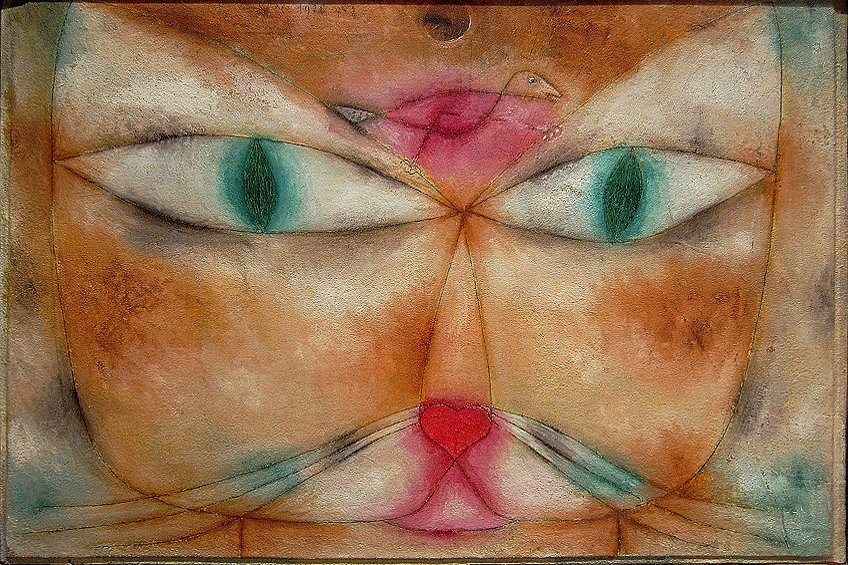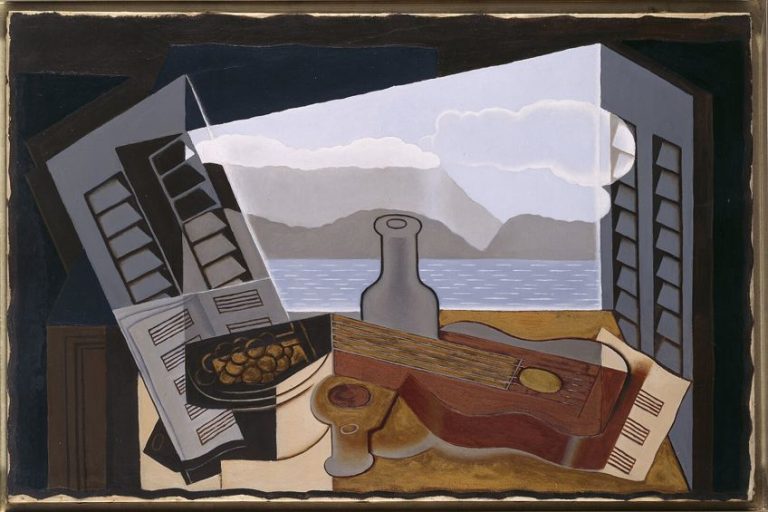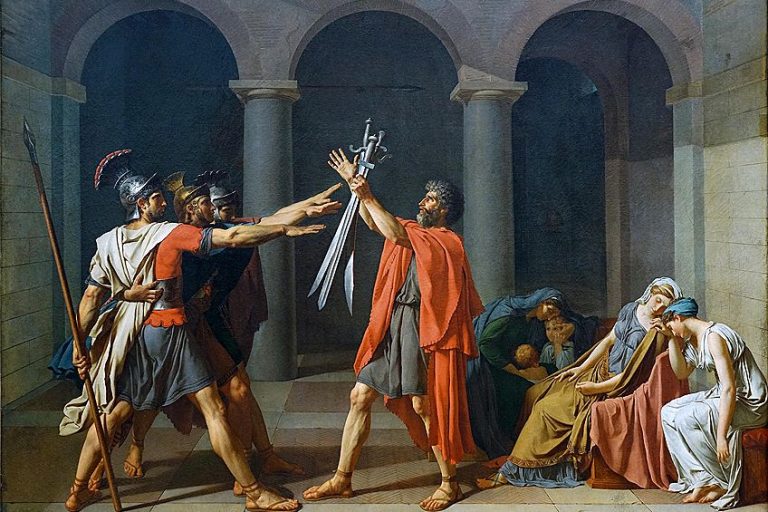10 Paul Klee Paintings – The Magic of Line and Form
Paul Klee, a Swiss-German artist renowned for his unique blend of color theory, whimsical symbolism, and abstract expressionism, left an indelible mark on the art world of the 20th century. With a career spanning from the early 20th century avant-garde movements to his later years as a teacher at the Bauhaus, Klee’s paintings reflect a profound exploration of form, line, and emotion. In this article, we delve into the world of Paul Klee’s top paintings, exploring the richness of his artistic vision and the enduring impact of his work on modern art.
Table of Contents
The Legacy of Paul Klee
Paul Klee’s legacy in the art world is profound and multifaceted. As a pioneer of abstract art and a key figure in the Bauhaus movement, Klee’s innovative use of color, form, and symbolism continues to influence artists across various genres and styles. His emphasis on creativity, experimentation, and the expressive potential of art has left a lasting impact on modern art theory and practice. Klee’s legacy extends beyond his own artworks to his role as a teacher and mentor, inspiring countless artists to push the boundaries of artistic expression and explore new realms of creativity.

Top 10 Paul Klee Paintings to Know
In this section, we delve into the captivating world of Paul Klee’s top 10 artworks, each a masterpiece in its own right. From whimsical compositions to profound explorations of color and form, Klee’s paintings invite us on a journey through his unique artistic vision.
Through these iconic pieces, we gain insight into Klee’s rich imagination, his deep philosophical ponderings, and his innovative techniques that continue to inspire and resonate with art lovers and enthusiasts around the globe.
Angelus Novus (1920)
| Date | 1920 |
| Medium | Monoprint |
| Dimensions (cm) | 31.8 x 24.2 |
| Where Is It Housed? | Israel Museum, Jerusalem, Israel |
“Angelus Novus” is a haunting depiction of an angel, characterized by its angular and almost frantic composition. This work is significant as it reflects Klee’s interest in mystical and spiritual themes, influenced by his studies of Kabbalah and esoteric philosophy.
The angel in the painting, with its wide eyes and outstretched wings, is often interpreted as a symbol of the tragic human condition, caught in the relentless march of history and unable to intervene in the face of destruction.

Red Balloon (1922)
| Date | 1922 |
| Medium | Oil and watercolor on paper |
| Dimensions (cm) | 32 x 31 |
| Where Is It Housed? | Solomon R. Guggenheim Museum, New York City, United States |
“Red Balloon” is a playful yet enigmatic painting featuring a floating red balloon against a blue background. This work is important as it exemplifies Klee’s use of color and geometric shapes to evoke a sense of wonder and whimsy. The balloon, a recurring motif in Klee’s art, symbolizes freedom, imagination, and the transcendence of earthly constraints. The simplicity of the composition belies the deeper philosophical themes that Klee often explored in his work.

Senecio (1922)
| Date | 1922 |
| Medium | Oil on canvas mounted on panel |
| Dimensions (cm) | 40.5 x 38 |
| Where Is It Housed? | Kunstmuseum Basel, Switzerland |
“Senecio” is a portrait of a man with a round, mask-like face and oversized eyes, rendered in bold colors and geometric forms. This painting is significant as it represents Klee’s interest in primitivism and the use of masks as symbolic expressions of identity and persona.
The exaggerated features of the figure suggest a sense of otherness and mystery, inviting viewers to contemplate the complexities of human existence and self-representation.

The Twittering Machine (1922)
| Date | 1922 |
| Medium | Oil transfer drawing on paper, bordered with gouache and ink |
| Dimensions (cm) | 64.1 x 48.3 |
| Where Is It Housed? | Museum of Modern Art, New York City, United States |
“The Twittering Machine” is a surreal depiction of a mechanical contraption with bird-like creatures perched on it, set against a dark background. This painting is important as it reflects Klee’s fascination with the intersection of nature and technology, and the consequences of human intervention in the natural world. The whimsical yet eerie imagery prompts viewers to ponder themes of captivity, artificiality, and the relationship between humans and animals.

Fish Magic (1925)
| Date | 1925 |
| Medium | Oil on watercolor on canvas on panel |
| Dimensions (cm) | 77.2 x 98.4 |
| Where Is It Housed? | Philadelphia Museum of Art, Pennsylvania, United States |
“Fish Magic” is a vibrant and dynamic composition featuring fish swimming in a dreamlike underwater setting. This painting is significant as it showcases Klee’s mastery of color and movement, creating a sense of fluidity and enchantment.
The fish, a recurring motif in Klee’s work symbolizing transformation and vitality, are depicted in a surreal and fantastical manner, inviting viewers to immerse themselves in a world of imagination and symbolism.

Castle and Sun (1928)
| Date | 1928 |
| Medium | Oil on canvas |
| Dimensions (cm) | Unknown |
| Where Is It Housed? | Private collection |
“Castle and Sun” is a whimsical and colorful depiction of a castle under a radiant sun. This painting is important as it exemplifies Klee’s playful use of geometric shapes and vibrant hues to create a sense of fantasy and wonder. The castle, with its simplified forms and exaggerated perspective, becomes a symbol of imagination and creativity, inviting viewers to explore a dreamlike realm where reality and imagination intertwine.

Cat and Bird (1928)
| Date | 1928 |
| Medium | Oil on ink on plaster-primed gauze mounted on plywood |
| Dimensions (cm) | 38.1 x 53.2 |
| Where Is It Housed? | The Museum of Modern Art, New York City, United States |
“Cat and Bird” portrays a cat and a bird in a surreal and abstract composition, with bold colors and fluid lines. This painting is significant as it reflects Klee’s fascination with the relationship between animals and the natural world. Depicted in a stylized and symbolic manner, the cat and bird represent opposing forces like predator and prey, freedom and captivity, or instinct and intellect.
They prompt viewers to contemplate deeper meanings about life’s dichotomies.

Fire in the Evening (1929)
| Date | 1929 |
| Medium | Oil on cardboard |
| Dimensions (cm) | 33.8 x 33.3 |
| Where Is It Housed? | The Museum of Modern Art, New York City, United States |
“Fire in the Evening” is a dynamic and energetic painting depicting flames and fiery forms against a dark background. This work is important as it captures Klee’s interest in elemental forces and the dynamic interplay of light and darkness. The fiery shapes, rendered with bold brushstrokes and intense colors, evoke a sense of passion, transformation, and vitality, inviting viewers to reflect on the power and beauty of natural phenomena.

Ad Parnassum (1932)
| Date | 1932 |
| Medium | Oil on canvas |
| Dimensions (cm) | 100 x 126 |
| Where Is It Housed? | Museum of Fine Arts Bern, Bern, Switzerland |
“Ad Parnassum” is a complex and intricate composition featuring geometric shapes, musical notations, and symbolic elements. This painting is significant as it represents Klee’s exploration of the relationship between music and visual art, inspired by his experiences as a musician and composer.
The overlapping forms and rhythmic patterns create a sense of harmony and movement, inviting viewers to engage with the synesthetic experience of sound and color.

Insula Dulcamara (1938)
| Date | 1938 |
| Medium | Oil on newsprint on burlap |
| Dimensions (cm) | 88 x 176 |
| Where Is It Housed? | Zentrum Paul Klee, Bern, Switzerland |
“Insula Dulcamara” depicts a dreamlike landscape with organic shapes and muted colors, evoking a sense of mystery and introspection. This painting is important as it reflects Klee’s interest in surrealism and the subconscious mind. The title, which translates to “Bittersweet Island,” suggests themes of longing, nostalgia, and the dualities of human experience, inviting viewers to explore the inner realms of memory and emotion depicted in the artwork.

Paul Klee’s top paintings showcase his extraordinary talent for blending abstract concepts with vibrant colors and intricate symbolism. From his early experiments with Cubism and Expressionism to his later explorations of geometric shapes and musical compositions, Klee’s works continue to captivate viewers and inspire generations of artists. Through his art, Klee invites us into a world of imagination, emotion, and intellectual curiosity, leaving a lasting legacy as one of the most innovative and influential artists of the 20th century.

Frequently Asked Questions
What Style of Art Is Paul Klee Known For?
Paul Klee is known for his contributions to abstract art, particularly his use of vibrant colors, geometric shapes, and symbolic imagery. He was associated with various art movements, including Expressionism, Surrealism, and the Bauhaus school.
What Themes Did Paul Klee Explore in His Artworks?
Klee’s artworks often explored themes such as nature, music, spirituality, and the human condition. He was interested in symbolism, mysticism, and the interplay between the conscious and subconscious mind, leading to a diverse range of subjects and interpretations in his paintings.
How Did Paul Klee Influence Modern Art?
Klee’s innovative use of color theory, abstract forms, and philosophical concepts had a profound impact on modern art. His emphasis on individual expression, experimentation, and the fusion of art and music inspired generations of artists and contributed to the development of abstract and conceptual art movements.
Isabella studied at the University of Cape Town in South Africa and graduated with a Bachelor of Arts majoring in English Literature & Language and Psychology. Throughout her undergraduate years, she took Art History as an additional subject and absolutely loved it. Building on from her art history knowledge that began in high school, art has always been a particular area of fascination for her. From learning about artworks previously unknown to her, or sharpening her existing understanding of specific works, the ability to continue learning within this interesting sphere excites her greatly.
Her focal points of interest in art history encompass profiling specific artists and art movements, as it is these areas where she is able to really dig deep into the rich narrative of the art world. Additionally, she particularly enjoys exploring the different artistic styles of the 20th century, as well as the important impact that female artists have had on the development of art history.
Learn more about Isabella Meyer and the Art in Context Team.
Cite this Article
Isabella, Meyer, “10 Paul Klee Paintings – The Magic of Line and Form.” Art in Context. March 27, 2024. URL: https://artincontext.org/10-paul-klee-paintings/











